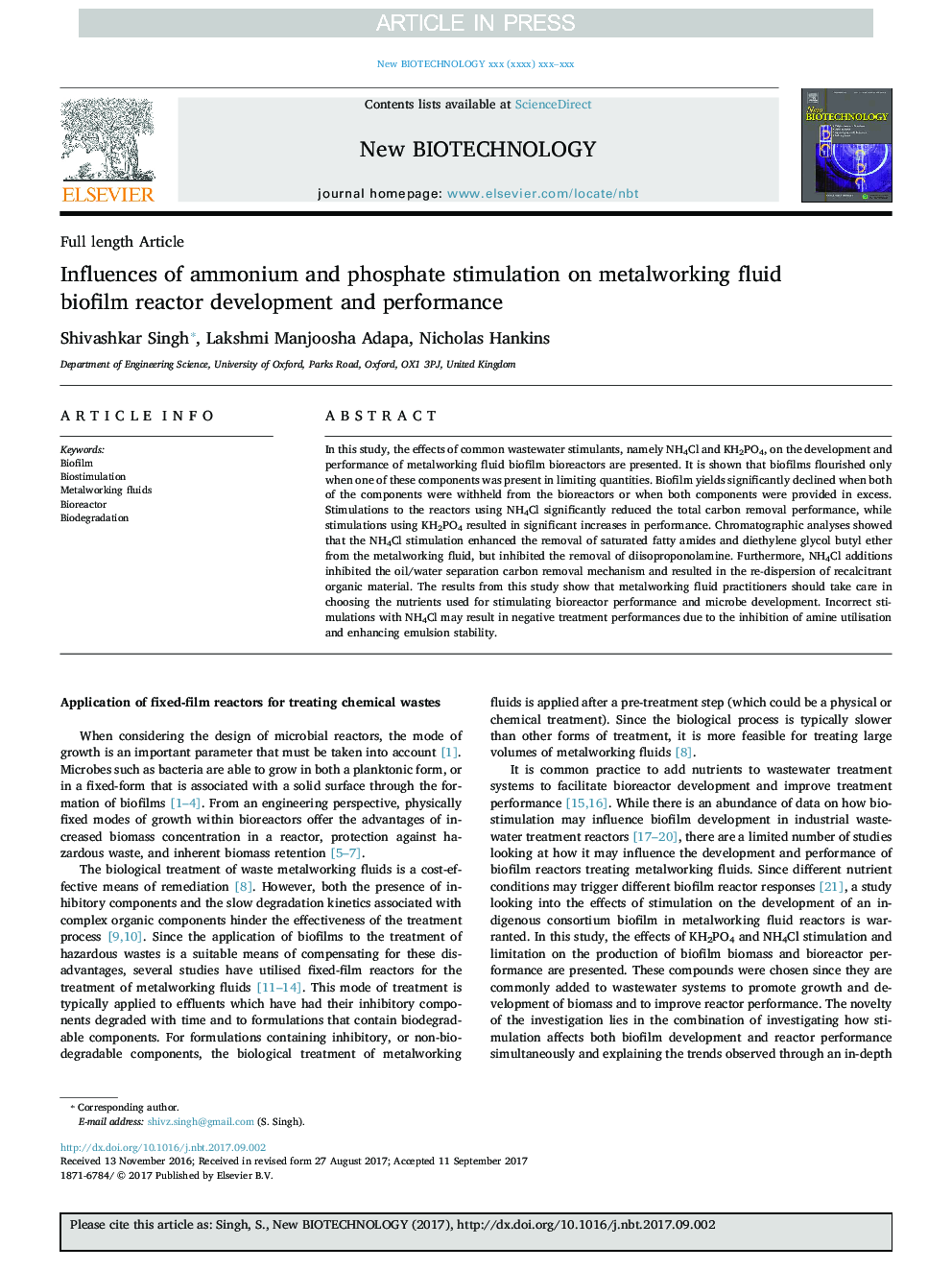| Article ID | Journal | Published Year | Pages | File Type |
|---|---|---|---|---|
| 4754881 | New Biotechnology | 2017 | 7 Pages |
Abstract
In this study, the effects of common wastewater stimulants, namely NH4Cl and KH2PO4, on the development and performance of metalworking fluid biofilm bioreactors are presented. It is shown that biofilms flourished only when one of these components was present in limiting quantities. Biofilm yields significantly declined when both of the components were withheld from the bioreactors or when both components were provided in excess. Stimulations to the reactors using NH4Cl significantly reduced the total carbon removal performance, while stimulations using KH2PO4 resulted in significant increases in performance. Chromatographic analyses showed that the NH4Cl stimulation enhanced the removal of saturated fatty amides and diethylene glycol butyl ether from the metalworking fluid, but inhibited the removal of diisoproponolamine. Furthermore, NH4Cl additions inhibited the oil/water separation carbon removal mechanism and resulted in the re-dispersion of recalcitrant organic material. The results from this study show that metalworking fluid practitioners should take care in choosing the nutrients used for stimulating bioreactor performance and microbe development. Incorrect stimulations with NH4Cl may result in negative treatment performances due to the inhibition of amine utilisation and enhancing emulsion stability.
Related Topics
Physical Sciences and Engineering
Chemical Engineering
Bioengineering
Authors
Shivashkar Singh, Lakshmi Manjoosha Adapa, Nicholas Hankins,
